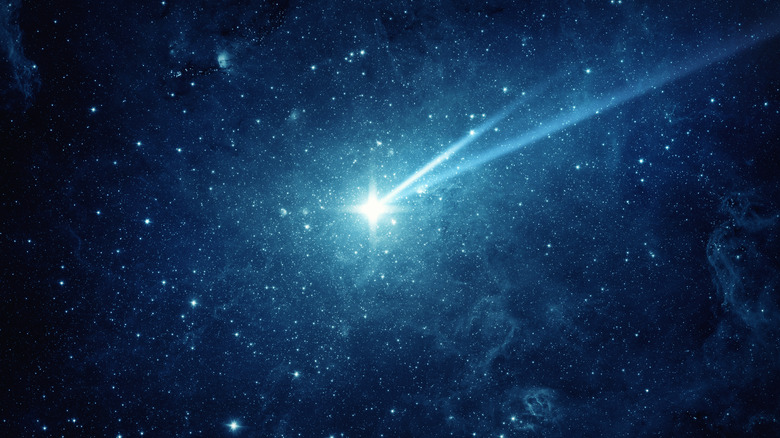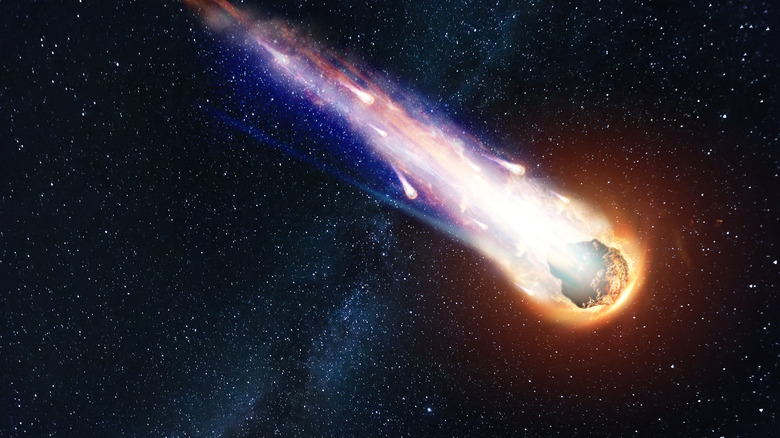Comets Are A Lot More Common Than You Think
Of all the sights in the night sky, comets are perhaps the most spectacular. It's incredible to think that something that appears so small to us is actually around as big as a modest town, per NASA. Comets are, essentially, just great balls of rock, frozen gas, and other space debris, but it's their characteristic tails that make them so stunning to look at. A comet's tail can be several million miles long, and it appears when a comet approaches the sun (which these cosmic objects orbit), causing it to heat up. Now that's melting with style.
A comet sighting is an event to remember. Per History, the iconic Halley's Comet passes Earth once every 76 years or so and has been prominently seen during pivotal moments in world history. For example, it appeared in 1066 as the Normans prepared their conquest of England. The curious thing is, as significant as comets are, there are actually far more of them than you might expect.
One trillion comets?
Rare, headline-grabbing comets — such as the one named after famed astronomer Edmund Halley — give a somewhat false impression. Halley's Comet performs its circuit once or twice in the average human lifetime to showboat, but there are actually a lot of comets in the reaches of space. An awful, awful lot.
Naturally, the size of outer space is a concept that's befuddling to even consider. According to NASA, there are potentially billions of universes beyond our own, which itself is so absurdly big that the sun is one million times larger than the Earth. In turn, it's believed that there could be one trillion comets in existence, according to the European Space Agency.
The ESA states that comets in the Milky Way tend to gradually lose their integrity as their ice is impacted by the sun. Some become hard and rocky enough that they lose their tails and become near-Earth asteroids. For all intents and purposes, these are dead comets. It is believed that there are two places in our universe that this great proliferation of comets come from: the enormous Oort Cloud — which NASA reports is a "bubble" of icy masses at the furthest edges of our solar system — and the Kuiper Belt. Britannica explains that the latter is a similar, smaller band of icy debris (believed to be remnants from the formation of the planets) located in the region of Neptune and Pluto.

